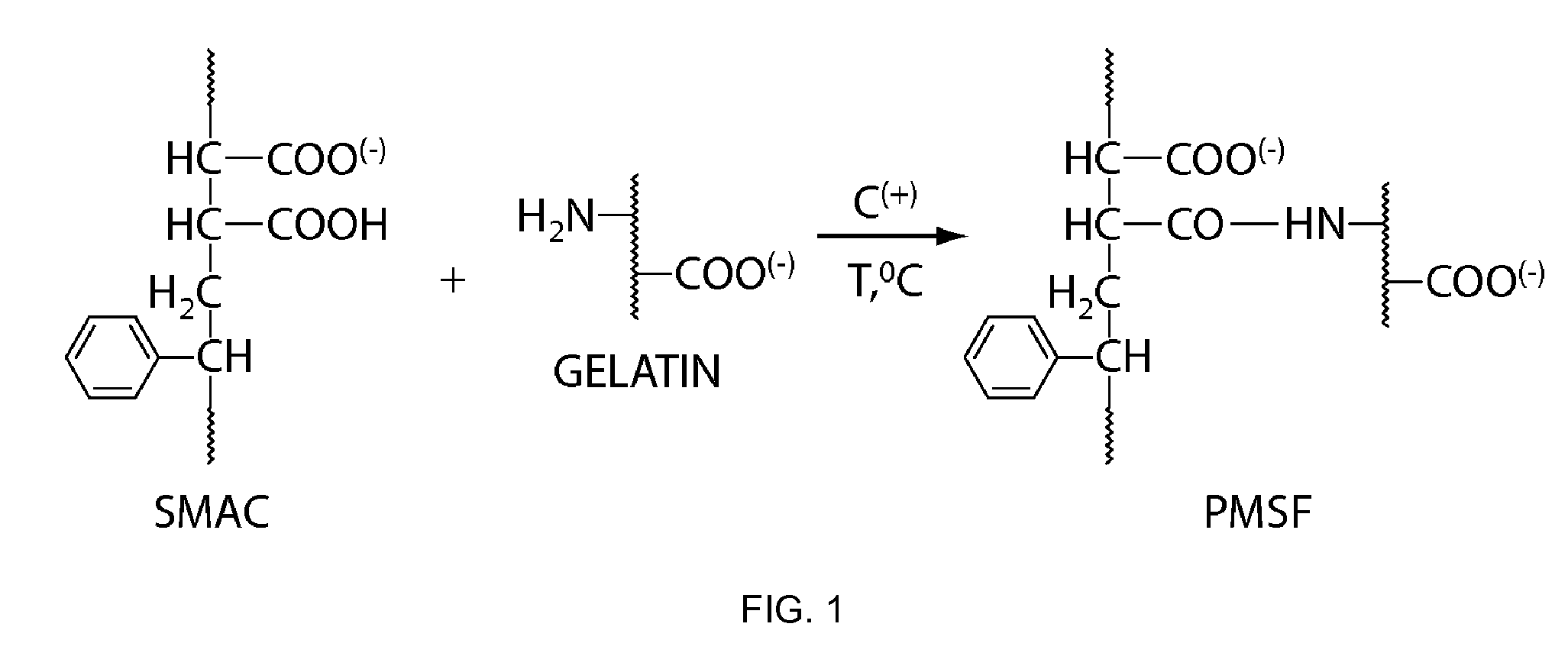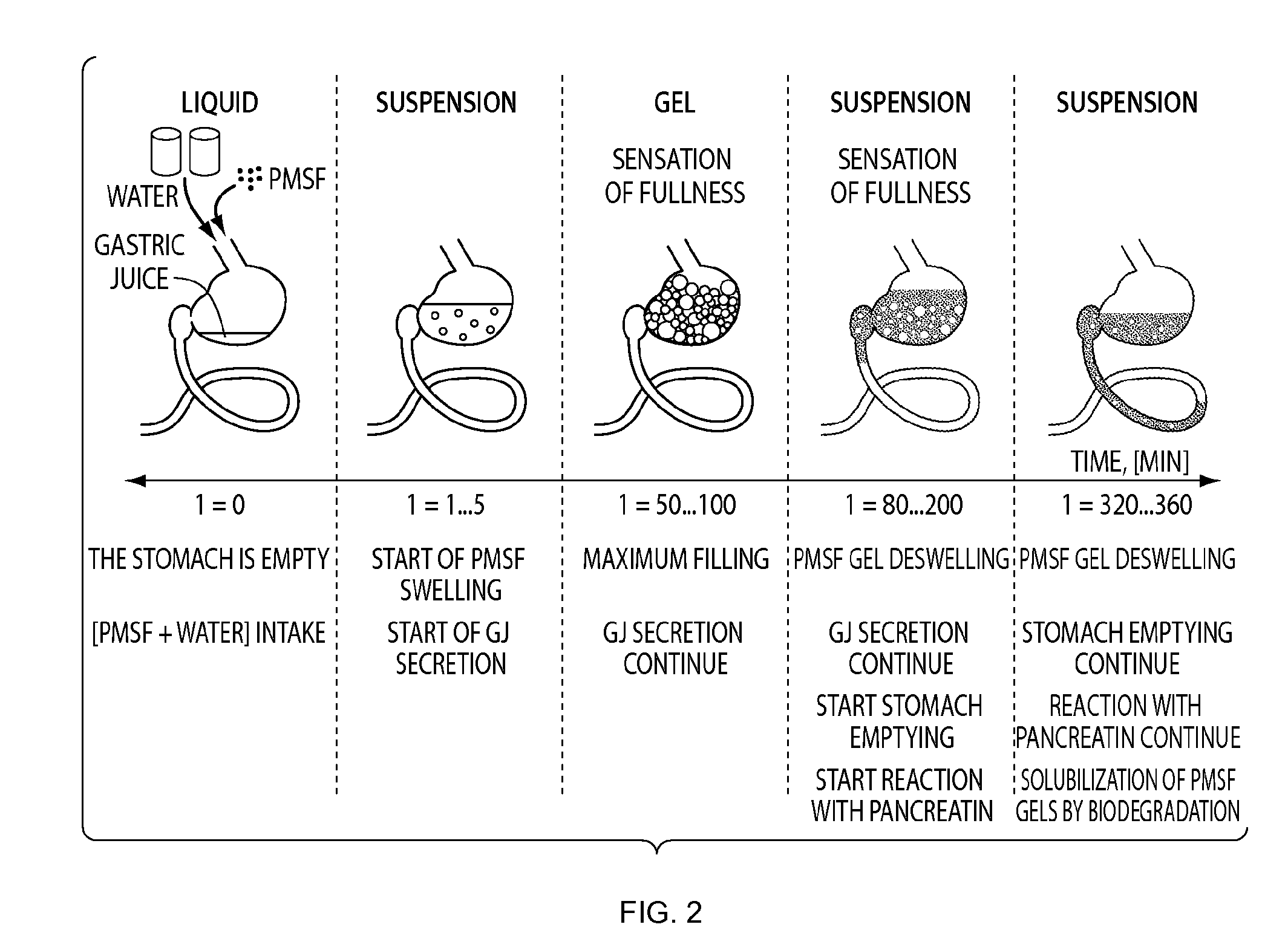Polymeric Materials as Stomach Filler and Their Preparation
- Summary
- Abstract
- Description
- Claims
- Application Information
AI Technical Summary
Benefits of technology
Problems solved by technology
Method used
Image
Examples
examples 1-5
[0228]These examples present methods of preparing finished PMSF products PMSF-1, PMSF-2, PMSF-3, PMSF-4, and PMSF-5, using the same operation mode, but with the different parameters specified in Table 2. The operation mode for obtaining the finished products comprises the following.
[0229]Quantities of raw materials necessary for preparation were: mA grams of synthetic polymer; mB grams of gelatin (from porcine skin, SIGMA Catalog number 9000-70-8); mC grams of alkaline agents (NaOH or NH4OH, from ACROS) and mw grams of distilled water (10 μs conductivity) used to prepare the polymeric composite in solution state [ABC-sol] with a solids content, cs, of 25%.
[0230]SOL-C was prepared by dissolving mC grams of alkaline agents in 100 g of distilled water in a 150 ml beaker. SOL-B was prepared by placing mB grams of gelatin in a 150 mL beaker with mw-100 / 2 g of distilled water. The gel was allowed to swell over 24 hours at room temperature. The resulting gel was melted at 50° C. and the re...
examples 6-10
[0236]These examples present methods of preparing finished PMSF products PMSF-6, PMSF-7, PMSF-8, PMSF-9, and PMSF-10, using the same operation mode, but with the different parameters specified in Table 4. The operation mode for obtaining the finished products comprises the following.
[0237]Quantities of raw materials necessary for preparation were: mA1 grams of synthetic polymer; mB1 grams of gelatin (from porcine skin from SIGMA Catalog number 9000-70-8); mC, grams of alkaline agents (NaOH from ACROS) and mW1, grams of distilled water (10 μS conductivity) used to prepare the polymeric composite in solution state [ABC-sol].
[0238]To prepare SOL-C, mc1 grams of alkaline agents were dissolved in 100 g of distilled water by simple mixing in a 150 ml beaker. To prepare SOL-B, mB1 grams of gelatin were placed in a 150 ml beaker. (mw-100) / 2 g of distilled water were added and the gelatin was allowed to swell for 24 hours at room temperature. The resulting gel was melted at 50° C. and additi...
PUM
| Property | Measurement | Unit |
|---|---|---|
| Temperature | aaaaa | aaaaa |
| Temperature | aaaaa | aaaaa |
| Temperature | aaaaa | aaaaa |
Abstract
Description
Claims
Application Information
 Login to View More
Login to View More - R&D
- Intellectual Property
- Life Sciences
- Materials
- Tech Scout
- Unparalleled Data Quality
- Higher Quality Content
- 60% Fewer Hallucinations
Browse by: Latest US Patents, China's latest patents, Technical Efficacy Thesaurus, Application Domain, Technology Topic, Popular Technical Reports.
© 2025 PatSnap. All rights reserved.Legal|Privacy policy|Modern Slavery Act Transparency Statement|Sitemap|About US| Contact US: help@patsnap.com



